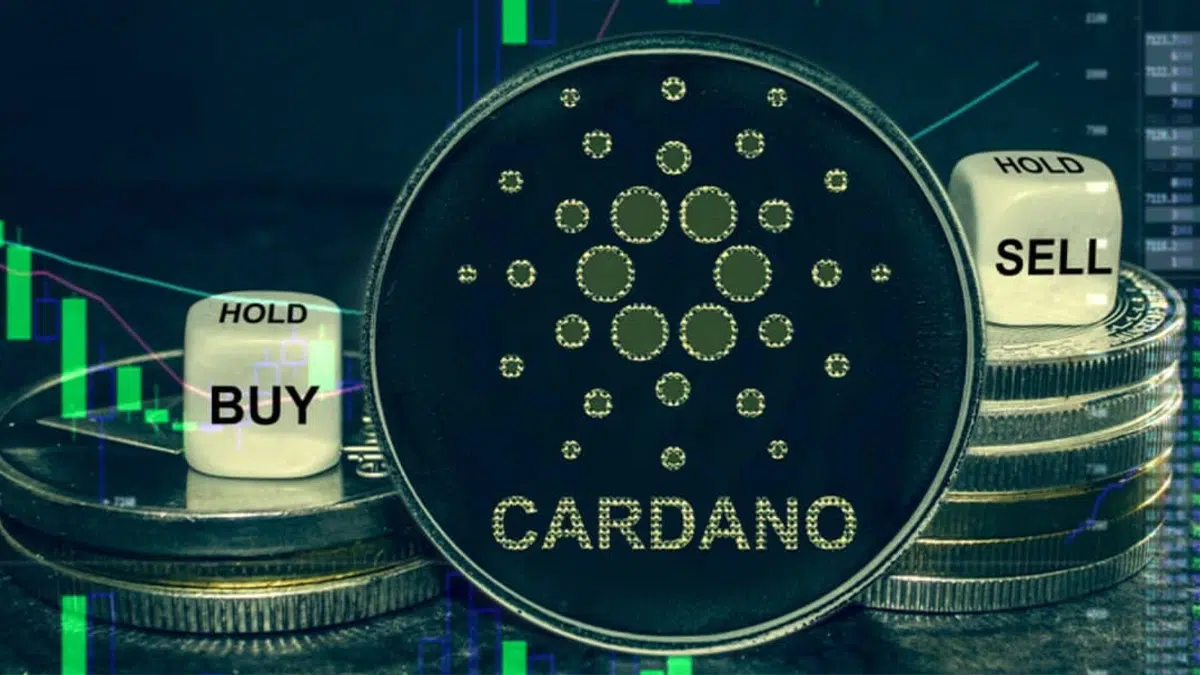On 22nd July 2024, Cardano ranks 10th in the cryptocurrency rankings with a market cap of 15.5 billion dollars. Its current circulating supply is 35.9 billion out of the 37 billion coins. As of the time of writing, the price of the Cardano token (ADA) is $0.437. The current market capitalization of Cardano stands at approximately $15.53 billion, with a fully diluted valuation reaching around $19.65 billion. The Cardano blockchain is known for its rigorous scientific approach, peer-reviewed research, and formal verification methods.
In today's blog, we will delve into Cardano and the various facets of its ecosystem. We will examine the origin story of Cardano, the tokenomics associated with this project, investors that support the project, the potential of the Cardano blockchain, and the approaches it employs to overcome the challenges ahead.
Journey@Cardano

Cardano (ADA) is a decentralized proof-of-stake (PoS) blockchain founded in 2015 by Charles Hoskinson who envisioned creating a more secure, scalable, and sustainable blockchain platform, He aimed to develop a blockchain grounded in academic research and peer-reviewed studies after being dissatisfied with Ethereum's direction.
The project was officially launched in 2017, marking the culmination of two years of intensive research and development. The initial phase, known as the Byron era, focused on establishing the network's foundational infrastructure. The research-first approach sets Cardano apart from many other blockchain projects that prioritize rapid growth over methodical development.
Following the Byron era, Cardano transitioned into the Shelley era to decentralize the network and enhance its security. The subsequent Goguen era introduced smart contract capabilities, allowing developers to create decentralized applications on the platform. Each phase of development has been carefully planned and executed, reflecting the meticulous research that underpins the Cardano ecosystem.
The Cardano platform is unique in its two-layered architecture, separating the settlement layer for direct ADA transactions from the computation layer for smart contracts and decentralized applications. This separation allows for greater flexibility and easier updates.
Team@Cardano

Cardano's success is largely attributed to the talented and dedicated team of individuals who have been instrumental in its development and growth. Led by its co-founder Charles Hoskinson, the Cardano team comprises experts from various fields, including computer science, cryptography, and blockchain technology.
Key Team Members
Jeremy Wood: Co-founder and a key architect of Cardano, Wood has played a significant role in the project's strategic direction and technological development.
Aggelos Kiayias: As a leading researcher and the Chief Scientist at IOHK, Kiayias focuses on cryptographic protocols and security, ensuring that Cardano remains at the forefront of blockchain technology.
Tamara Haasen: With a background in project management and operations, Haasen is instrumental in overseeing various initiatives within the Cardano ecosystem.
Romain Pellerin: As the Chief Technology Officer, Pellerin leads the technical development of Cardano, ensuring that the platform's architecture is robust and efficient.
Jeff Pollack: Pollack's experience in business development and strategy helps drive Cardano's growth and partnerships across various sectors.
In addition to its core team, Cardano benefits from a vibrant community of developers, researchers, and enthusiasts who contribute to its ecosystem. The collaborative environment fosters innovation and ensures that the platform evolves in line with user needs and industry trends.
Tech@Cardano

Cardano's core is the Ouroboros proof-of-stake (PoS) consensus algorithm, designed to provide a secure and efficient means of validating transactions. This PoS mechanism significantly enhances scalability, theoretically enabling a throughput of up to 257 transactions per second (TPS), which is a substantial improvement over older protocols like Bitcoin and Ethereum that utilize proof-of-work (PoW) systems.
Cardano's architecture is structured into two main layers:
1. Cardano Settlement Layer (CSL): This layer is responsible for handling the transactions of the network and the native cryptocurrency, ADA. It ensures that transactions are recorded securely and efficiently, providing a robust foundation for the blockchain.
2. Cardano Computation Layer (CCL): This layer facilitates smart contracts and decentralized applications (dApps), leveraging the Plutus programming language, which is based on Haskell. It allows developers to build and deploy applications on the Cardano blockchain while maintaining the security and scalability offered by the underlying settlement layer.
Cardano's development is guided by a philosophy that prioritizes quality and security over speed. This approach is evident in its use of formal methods and rigorous testing protocols, which aim to eliminate vulnerabilities before deployment. The governance model of Cardano incorporates a democratic system complemented by a treasury system that ensures the long-term sustainability of the network.
Investors and Partners

While specific details about Cardano's investors are limited, the total funding amount is estimated to be above $100 million, with investments coming in the form of debt, equity, and returnable grants. Julius Sarokin is an angel investor in the project who invested in 2017.
Cardano Development, a company associated with the Cardano ecosystem, is one of the key investors in the Cardano ecosystem. The organization is committed to fostering financial stability and innovation in frontier economies through the introduction of risk management products and services.
In addition to direct investments, Cardano has established a wide range of organizations in its ecosystem to further its goals. The project actively seeks out local and international entities to support its work and ensure the flow of innovative solutions and capital into high-impact areas.
Notable organizations in the Cardano ecosystem include:
IOHK (Input Output Hong Kong): The engineering and technology company contracted to design, build, and maintain Cardano through 2020. The IOHK team, led by Charles Hoskinson and Jeremy Wood, is responsible for the technical implementation of Cardano's architecture and features.
Emurgo: The venture-building entity in the Cardano ecosystem, focused on aiding, integrating, and fostering Cardano blockchain applications. The company works closely with the Cardano Foundation and IOHK to drive the adoption of Cardano in various industries
These collaborations and entities help to strengthen Cardano's position in the blockchain landscape and provide additional resources for the development and adoption of the platform. Popular crypto exchanges where you can buy, sell, and trade Cardano include Binance, Bybit, Kucoin, Coinbase, and Kraken among many others.
Risks@Cardano

Despite its innovative technology and strong community support, Cardano faces several threats that could impact its success and adoption in the competitive blockchain landscape. Understanding these threats is crucial for stakeholders to navigate the challenges ahead.
1. Competition from Other Blockchains
Cardano operates in a highly competitive environment, contending with numerous general-purpose, smart contract platforms that utilize Proof-of-Stake (PoS) mechanisms. Among its primary competitors are Ethereum, Solana, Avalanche, Cosmos, and Polkadot, all of which have established themselves as formidable players in the blockchain space.
2. Slow Development and Adoption
Cardano's gradual rollout of features has resulted in a smaller decentralized finance (DeFi) and non-fungible token (NFT) ecosystem compared to its rivals. This slow start can create friction in network adoption, as developers and users often gravitate toward platforms with more immediate opportunities and established communities. Additionally, Cardano's reliance on a unique programming language, Plutus, which is based on Haskell, may pose a barrier to entry for many developers who are more familiar with mainstream languages like Solidity used in Ethereum.
3. EVM Compatibility Issues
Another significant hurdle for Cardano is its lack of compatibility with the Ethereum Virtual Machine (EVM). This incompatibility restricts the ability of developers to easily port their applications from Ethereum to Cardano, limiting the potential for cross-platform collaboration and reducing the attractiveness of Cardano for developers already entrenched in the Ethereum ecosystem. As a result, Cardano must work harder to build its developer community and incentivize projects to launch on its platform.
4. Valuation Concerns
Despite its significant market capitalization, some analysts argue that ADA may be "overvalued" relative to other smart contract blockchains. This perception stems from the fact that Cardano is still considered an unfinished product with limited utility compared to its competitors, many of which have more developed ecosystems and widespread usage. While Cardano has invested years into research and marketing, its actual deployment and utility remain in the early stages, leading to speculation that much of its current value is driven by future potential rather than realized functionality.
5. Risk of Layer Separation
Cardano's innovative architecture separates its settlement and computational layers, which, while beneficial for scalability and security, introduces potential vulnerabilities. In a worst-case scenario, this separation could be exploited to facilitate censorship or social engineering attacks. If malicious actors gain control over one layer, they could manipulate transactions or smart contracts, undermining the integrity of the entire network.
Future Of Cardano

Cardano's roadmap outlines several key phases that will shape its future. The recent completion of the Goguen era, which introduced smart contract capabilities, has opened the door for developers to create decentralized applications (dApps) on the platform.
As Cardano transitions into the Basho era, the focus will shift toward enhancing scalability and interoperability, allowing the network to handle larger volumes of transactions and interact seamlessly with other blockchains. This will be crucial for attracting more developers and projects to the ecosystem.
The final phase, known as the Voltaire era, aims to implement a decentralized governance system that empowers ADA holders to participate in decision-making processes. This governance model will ensure that the community has a voice in the platform's future direction, fostering a sense of ownership and engagement among users.
Cardano's ecosystem is expected to expand significantly, particularly with the rise of decentralized finance (DeFi) and non-fungible tokens (NFTs). The strength of Cardano's community is another critical factor in its future success. With millions of users and a robust network of stake pools, the platform benefits from active participation and support.
In a significant move to bridge the digital divide in underserved regions, Cardano has partnered with World Mobile, an innovative telecommunications initiative focused on providing affordable and reliable internet access. This partnership aligns both organizations in their mission to empower communities through technology, particularly in Africa.
The Cardano Foundation has recently established a significant partnership with the government of Entre Ríos Province in Argentina, marking a pivotal step in promoting blockchain technology in the region. This collaboration formalized through a public signing between Rogelio Frigerio, the governor of Entre Ríos, and Rafael Fraga, the Cardano Foundation's LATAM Lead for Business Development, aims to facilitate the adoption of blockchain solutions to address various economic challenges.
Conclusion@Cardano

Cardano has emerged as a promising blockchain platform with its multi-layer architecture, focus on academic research, and commitment to security and sustainability. The platform's partnership with World Mobile to provide affordable internet access in Africa showcases its potential for real-world impact, while the Cardano Foundation's efforts to promote adoption and standardization have contributed to its growing reputation.
Organizations like Cardano Development are investing in the ecosystem, focusing on financial services and risk management solutions. However, Cardano must address challenges such as competition from other blockchains, user adoption, EVM incompatibility, valuation concerns, and layer separation risks to maintain its competitive edge. By focusing on developer engagement, community involvement, and strategic partnerships, the platform can capitalize on its strengths and drive widespread adoption.
Cardano's journey is marked by a commitment to research, innovation, and real-world impact. As a layer-1 blockchain platform, Cardano operates in a highly competitive space that has seen the rise of other notable projects like Solana and Ethereum.
Cardano must continue to double down on its strengths and focus on developing compelling use cases to pose a meaningful challenge to incumbents in the L1 chains. The blockchain industry continues to evolve rapidly and this dynamic environment presents opportunities for platforms like Cardano to carve out their niches and provide unique value propositions.
References
Threats to Cardano's Success | Cardano Explorer (cexplorer.io)
https://cardanospot.io/news/world-mobile-building-a-connected-future-0
https://app.dealroom.co/companies/cardano
https://support.bitkub.com/en/support/solutions/articles/151000034425-two-layers-of-cardano

